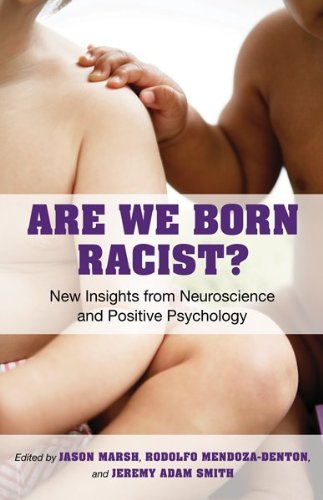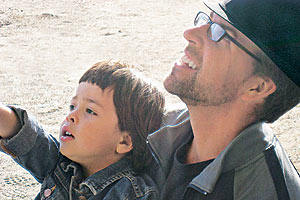In this nine-minute TED video, Nate Silver (primary author of the blog FiveThirtyEight) explores racial attitudes in the 2008 elections.
His conclusion: Along with education levels, population density and neighborhood design were the most important factors predicting whether anti-black bias influenced a voter in 2008.
"Yes," he says, "racism is predictable."
"I'm a big fan of cities, especially if we have cities that are diverse and sustainable, and can support people of different ethnicities and different income groups," says Silver. He urges us to embrace policies like street grids that can help "to facilitate more of the kind of casual networking and the casual interaction that you might have on a daily basis."
Social scientists call this "the contact hypothesis" or "social contact theory"–the idea that we can build a multicultural society by simply bringing people of different races and cultures together.
Sounds simple, doesn't it? And it's been proven true over and over again, in many academic disciplines. Bringing people together breeds tolerance for difference.
Historically, however, human habitats have been created for keeping us separate from "the Other," often quite literally surrounded by walls. There have been many honorable exceptions, but only recently have Americans really started to explore how we might design for diversity instead of exclusivity.
 I'm the co-editor of an anthology of essays about the new science of racism called Are We Born Racist?, which Beacon Press will publish in August 2010. In that book, we explore the deep implications of Silver's argument, starting with the impact of racism on our mental, physical, and social health, and ending with very specific ideas and examples of how we can design a post-prejudice society, from schools to workplaces to policing to cities.
I'm the co-editor of an anthology of essays about the new science of racism called Are We Born Racist?, which Beacon Press will publish in August 2010. In that book, we explore the deep implications of Silver's argument, starting with the impact of racism on our mental, physical, and social health, and ending with very specific ideas and examples of how we can design a post-prejudice society, from schools to workplaces to policing to cities.
The trick, in all these cases, is to give people opportunities to reflect on prejudice and interact with people different from themselves. Countering racism isn't about virtue; it's a design problem.
Indeed, I've always been impressed by the unity of benefits that shareable cities give to us. When we design our living spaces to be walkable and inclusive, we reduce our carbon footprint, improve our health, save lives, counter prejudice, and facilitate cultural and technological innovation.
"A Shareable City is a rebuke to a madly speeded-up world full of stupid work done badly," writes Chris Carlsson. "It is a repudiation of an isolated, stingy, fearful life. It is a generous embrace of abundance and trust, seeing the glass as endlessly refilling instead of ceaselessly draining."








